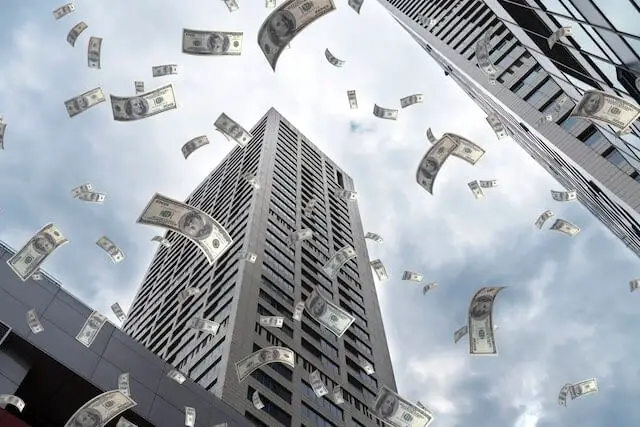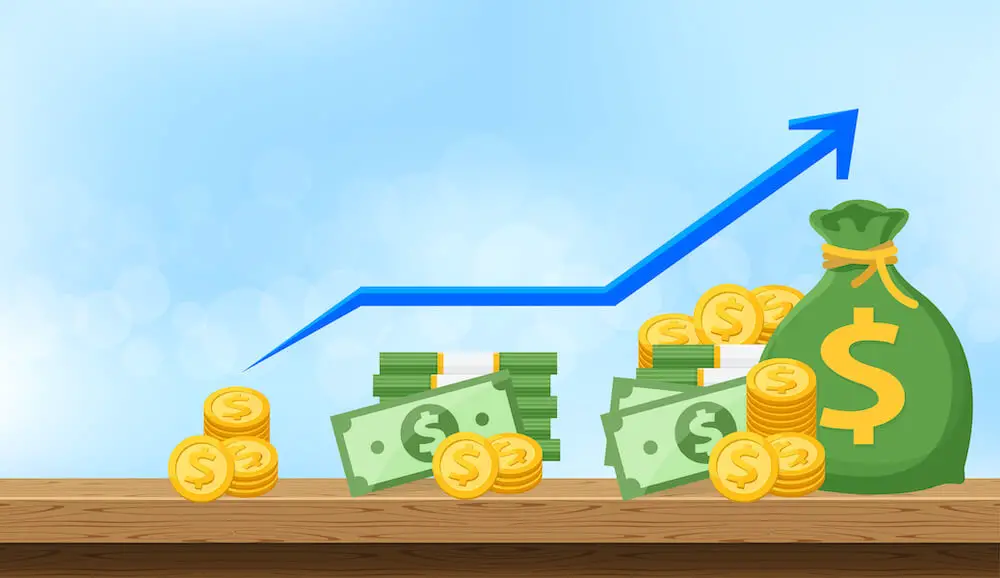GS Locality Pay Area Coverage Rapidly Increasing
Since 2015, the number of locality pay areas has gone from 33 to 53, a 61% increase. The Federal Salary Council (FSC) recently recommended adding four more areas to be designated as locality pay areas. This will put the total number of locality pay areas as 57. The President’s Pay Agent approved the addition of these new areas recently and this will likely be implemented in 2024.
In 2023, the FSC recommended adding about 16,000 federal employees into existing locality pay areas. That did not occur for 2023 but is very likely to be implemented in 2024.
When the President’s Pay Agent issued its 2023 report, it approved other recommendations from the Federal Salary Council as well. According to a statement from OPM, this will add about 32,000 more federal employees into locality pay areas.
FedSmith has asked the Office of Personnel Management (OPM) for the total number or percentage of federal employees included in (or excluded from) locality pay areas. As of the date of this writing, we have not been able to obtain that information.
While the number of federal employees in locality pay areas remains unknown, we do know the number of federal employees in locality pay areas has been growing.
How Much is it Worth Joining GS Locality Pay System?
In 2016, the number of GS locality pay areas jumped from 33 to 46, a 39% increase. How has the average salary for employees in these new locality areas fared compared to the “Rest of the U.S.”?
For this article, we selected five relatively new GS locality pay areas to see how their pay has increased since joining a the GS locality pay system. Also for comparison, we added two of the highest locality pay areas, Washington, DC, and the San Jose-San Francisco locality pay area.
In short, being in a locality pay area leads to significantly higher pay over time.
Here is how these areas stacked up. Over a 9-year period, the Washington-Baltimore and San Jose-San Francisco locality pay areas received the highest salary increase under locality pay. They had an overall increase of 22.3%. All of the locality pay areas ended up with a larger raise than the “Rest of the US” category.
| Pay Area | 2015 Raise | 2016 Raise | 2017 Raise | 2018 Raise | 2019 Raise | 2020 Raise | 2021 Raise | 2022 Raise | 2023 Raise | Total |
| Albany, NY | 1% | 1.29% | 2.20% | 1.97% | 2.0% | 3.2% | 1% | 2.89% | 4.78% | 20.33% |
| Palm Bay, FL | 1% | 1.23% | 1.94% | 1.80% | 1.75% | 2.95% | 1% | 2.45% | 4.36% | 18.48% |
| Las Vegas, NV | 1% | 1.35% | 2.22% | 1.89% | 1.88% | 3.16% | 1% | 2.7% | 4.55% | 19.75% |
| Charlotte, NC | 1% | 1.25% | 2.07% | 1.89% | 1.91% | 3.17% | 1% | 2.74% | 4.6% | 19.63% |
| Washington, DC | 1% | 1.46% | 2.88% | 2.29% | 2.27% | 3.52% | 1% | 3.02% | 4.86% | 22.3% |
| San Francisco | 1% | 1.45% | 2.8% | 2.21% | 2.18% | 3.4% | 1% | 3.14% | 5.13% | 22.3% |
| Rest of US | 1% | 1.17% | 1.63% | 1.67% | 1.66% | 2.85% | 1% | 2.42% | 4.37% | 17.77% |
Sample Comparison: Pay Changes for GS 12, Step 9 in These Locality Pay Areas
For comparison purposes, in order to see how much difference there would be for some higher paid federal employees in locality pay areas, we picked the salary of a GS 12, Step 9 under the General Schedule for each year from 2015-2023. 2015 was selected as it was the last year in which there were 33 locality pay areas.
We then looked at the total increase in salary for this hypothetical federal employee and then compared the increase to the Rest of the U.S over a nine-year period. This enabled a picture to emerge of the differential that being added to a locality pay area can make over time.
Here is a comparison of how a federal employee’s salary at this level increased in each of these locality pay areas from 2015-2022.
The final row in the chart shows how much the average federal employee’s salary increased through June 2022 as this is the latest available data.
As the chart shows, there was a significant increase for this GS grade and step. It is more surprising that the average federal salary went up quite a bit more than any of the locality pay areas. The average federal salary figures for each year are for the United States only. The 2022 salary is for June as that is when the latest data were posted by OPM.
The data show that the average federal salary went up considerably more than the average salary for the GS 12, step 9, and considerably more than the total increase for any of the pay areas listed. The difference, presumably, is at least partially due to promotions and step increases within the federal workforce.
At the end of June 2022, the average federal employee salary in the United States went up 35.6% even though the highest annual pay increase in the locality pay areas listed was about 22% which was for the Washington and San Francisco locality pay areas. At the same time, the salary for a GS 12, Step 9 in Washington went up 22.3%—about the same as the annual pay raise for that pay area.
| GS 12, Step 9 | 2015 Salary | 2023 Salary | Total Increase | % Increase Over RUS |
| Albany, NY | $88,915 | $107,575 | $18,660 | 16.60% |
| Palm Bay, FL | $88,915 | $105,639 | $16,724 | 4.50% |
| Las Vegas, NV | $88,915 | $106,954 | $18,039 | 12.72% |
| Charlotte, NC | $88,915 | $106,837 | $17,922 | 11.98% |
| Washington, DC | $96,750 | $119,319 | $22,569 | 41.02% |
| San Francisco | $105,263 | $129,820 | $24,557 | 53.44% |
| Rest of US | $88,915 | $104,919 | $16,004 | n/a |
| Average Federal Salary | $70,224 | $94,876 (June 22) |
Pay Increase 53% Higher in One Locality Pay Area Compared to “Rest of the U.S.”
The pay raises for the Rest of the U.S. category are smaller—sometimes much smaller over time—than in some locality pay areas.
The sample locality pay areas added in 2015 each had a larger pay increase compared to the Rest of the U.S. category from 2015-2023 for a GS 12, Step 9. Of these new areas in the chart, the Albany locality pay area provided the best return over the Rest of the U.S. category for federal employees gaining 16.6%. Palm Bay, Florida had the smallest increase over the Rest of the U.S. with a 4.5% increase.
But, compared to how the federal employees in the Washington (41%) and San Francisco (53%) locality pay areas fared during this 9-year time frame, those increases were relatively small. The pay raises in the San Francisco and Washington, DC locality pay areas are frequently among the highest each year. Over time, this differential in the increase adds up.
From 2015-2023, the percentage difference in the increase for the Rest of the U.S. ($16,004) and the San Jose-San Francisco locality pay area ($22,569) was 53%. The percentage difference in the increase for the Washington area over the Rest of the U.S. was about 41% for this time period for a GS 12, Step 9.
| Locality Area | Increase in Differential Over “Rest of the U.S.“ 2015-2023 |
| Albany, NY | 16.60% |
| Palm Bay, FL | 4.50% |
| Las Vegas, NV | 12.72% |
| Charlotte, NC | 11.98% |
| Washington, DC | 41.02% |
| San Jose–San Francisco, CA | 53.44% |
Frequently Asked Questions (FAQs) About GS Locality Pay
How is GS Locality Pay Calculated?
Each GS Locality Pay Area has a locality pay percentage. This percentage is usually updated each year. This percentage specifies how much over the GS Base Pay government employees working within that locality will earn.
Where Can I Find the Locality Pay Differential for GS Locality Pay?
The locality percentage is updated in most years. The GS locality pay tables specify the percentage for each locality area.
Where Do I Find the Locality Pay Percentage?
The locality pay percentage is posted at the top of the pay table for each locality pay area. Here is an example for 2022: “INCORPORATING THE 2.2% GENERAL SCHEDULE INCREASE AND A LOCALITY PAYMENT OF 18.68%”. This means that 2.2% was added to the GS Base Pay Table for the Albany, NY locality pay area in 2022. The 18.68% means that this percentage has been added over time to the base pay table for this locality pay area.






